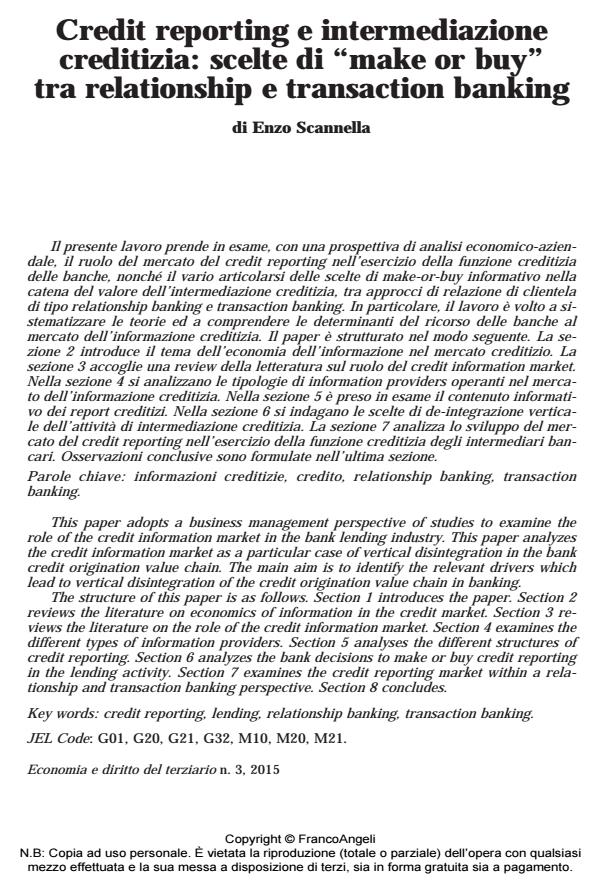Credit reporting e intermediazione creditizia: scelte di "make or buy" tra relationship e transaction banking
Journal title ECONOMIA E DIRITTO DEL TERZIARIO
Author/s Enzo Scannella
Publishing Year 2016 Issue 2015/3
Language Italian Pages 30 P. 401-430 File size 481 KB
DOI 10.3280/ED2015-003002
DOI is like a bar code for intellectual property: to have more infomation
click here
Below, you can see the article first page
If you want to buy this article in PDF format, you can do it, following the instructions to buy download credits

FrancoAngeli is member of Publishers International Linking Association, Inc (PILA), a not-for-profit association which run the CrossRef service enabling links to and from online scholarly content.
This paper adopts a business management perspective of studies to examine the role of the credit information market in the bank lending industry. This paper analyzes the credit information market as a particular case of vertical disintegration in the bank credit origination value chain. The main aim is to identify the relevant drivers which lead to vertical disintegration of the credit origination value chain in banking. The structure of this paper is as follows. Section 1 introduces the paper. Section 2 reviews the literature on economics of information in the credit market. Section 3 reviews the literature on the role of the credit information market. Section 4 examines the different types of information providers. Section 5 analyses the different structures of credit reporting. Section 6 analyzes the bank decisions to make or buy credit reporting in the lending activity. Section 7 examines the credit reporting market within a relationship and transaction banking perspective. Section 8 concludes.
Keywords: Credit reporting, lending, relationship banking, transaction banking.
Jel codes: G01, G20, G21, G32, M10, M20, M21
Enzo Scannella, Credit reporting e intermediazione creditizia: scelte di "make or buy" tra relationship e transaction banking in "ECONOMIA E DIRITTO DEL TERZIARIO " 3/2015, pp 401-430, DOI: 10.3280/ED2015-003002